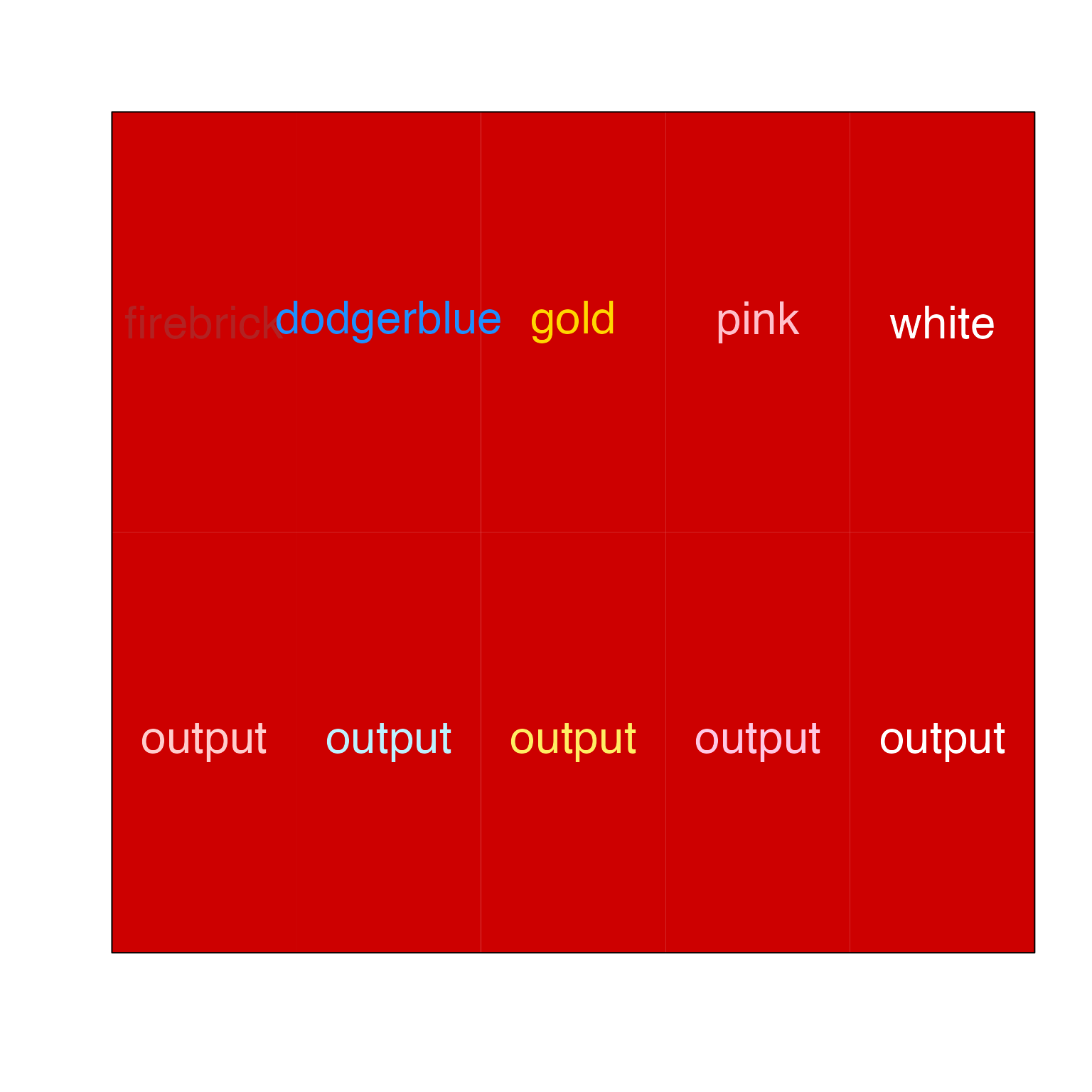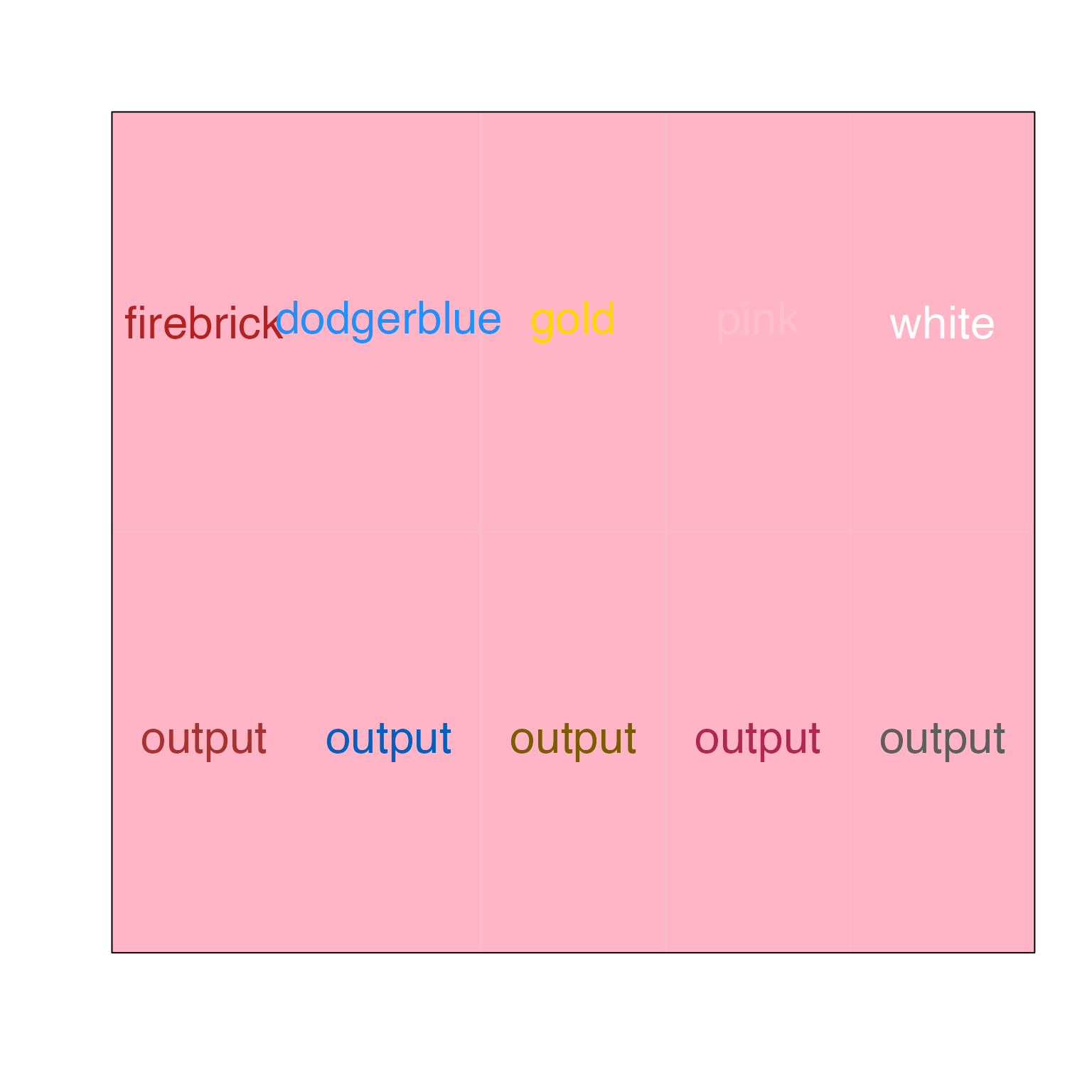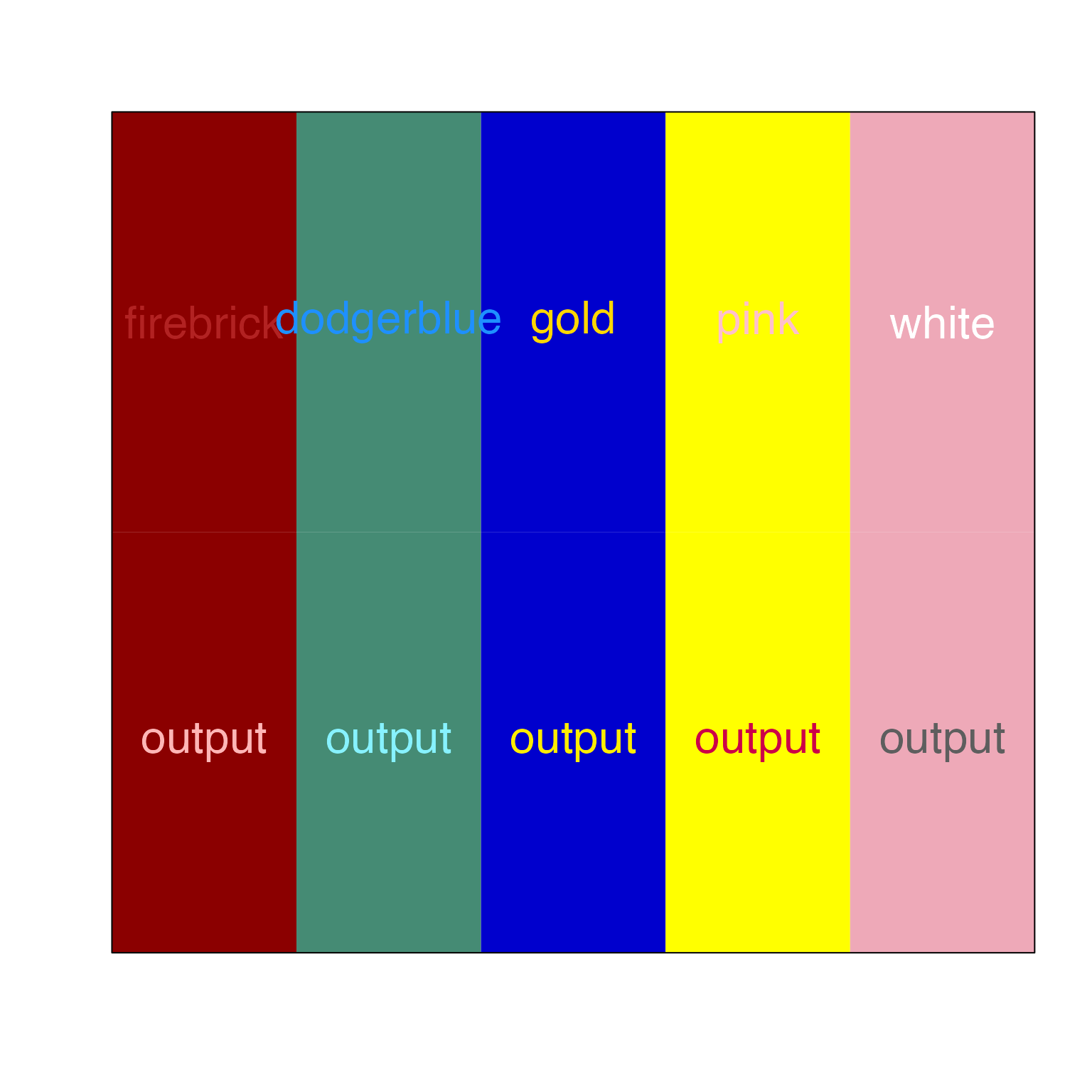Make color contrast with background colors
Usage
make_color_contrast(
x,
y = NULL,
bg = "white",
L_threshold = 65,
C_floor = 90,
L_hi = 95,
L_lo = 40,
blend_preset = "ryb",
do_plot = FALSE,
cex = 2,
...
)Arguments
- x
charactervector of text colors- y
charactervector of fill colors for which the colors inxshould be adjusted for visual contrast.- bg
characterbackground color, default 'white', used when colors inycontain transparency.- L_threshold
numericthreshold Luminance (L) value which defines the point where the background color should have light or dark text for optimum visual contrast. The default65is well-discussed in data visualization forums, however may not be ideal for all viewing conditions.- C_floor
numericto define the minimum Chroma (C) when the adjusted color Chroma is below an internal threshold 20.- L_hi, L_lo
numericvalue to define the Luminance (L) used for 'hi' (bright) output colors, or 'lo' (dark) output colors. The default 'L_hi=95' is fairly high, and 'L_lo=40' is moderately dark. In future the recommended default may become 'L_hi=85' to improve the resulting color hue.- blend_preset
characterstring passed aspresettocolorjam::blend_colors()to define the color wheel used during color blending operations. Default 'ryb' uses the red-yellow-blue color wheel. This adjustment only affects layering 'y' together with 'bg'.- do_plot
logicalwhether to create a visual plot illustrating the input and output colors, on top of the background.- cex
numerictext size adjustment used whendo_plot=TRUE.- ...
additional arguments are passed to internal functions, including
colorjam::blend_colors().
Details
This function provides a simple method to ensure a color has adequate visual contrast with a background color, while retaining some color saturation. For example, red on red background will return something close to pink, so the pink retains the red color saturation but is visually distinct from the background color red.
Similarly, pink on pink will return something close to red.
See also
Other venndir advanced:
collapse_im(),
combine_marquee_styles(),
nudge_venndir_label()
Examples
x <- c("firebrick", "dodgerblue", "gold", "pink", "white");
y <- rep("red3", 4);
make_color_contrast(x, y, do_plot=TRUE);
 #> [1] "#FFCDCD" "#BDF1FF" "#FFEE64" "#FFC8E4" "#FFFFFF"
y <- rep("pink1", 4);
make_color_contrast(x, y, do_plot=TRUE);
#> [1] "#FFCDCD" "#BDF1FF" "#FFEE64" "#FFC8E4" "#FFFFFF"
y <- rep("pink1", 4);
make_color_contrast(x, y, do_plot=TRUE);
 #> [1] "#A73232" "#005FBF" "#7B5C00" "#AF2851" "#5E5E5E"
y <- rep("gold", 4);
make_color_contrast(x, y, do_plot=TRUE);
#> [1] "#A73232" "#005FBF" "#7B5C00" "#AF2851" "#5E5E5E"
y <- rep("gold", 4);
make_color_contrast(x, y, do_plot=TRUE);
 #> [1] "#A73232" "#005FBF" "#7B5C00" "#AF2851" "#5E5E5E"
y <- c("red4", "aquamarine4", "blue3", "yellow", "pink2")
make_color_contrast(x, y, do_plot=TRUE, C_floor=140);
#> [1] "#A73232" "#005FBF" "#7B5C00" "#AF2851" "#5E5E5E"
y <- c("red4", "aquamarine4", "blue3", "yellow", "pink2")
make_color_contrast(x, y, do_plot=TRUE, C_floor=140);
 #> [1] "#FFB6B6" "#87F2FF" "#FFED00" "#CC0048" "#5E5E5E"
#> [1] "#FFB6B6" "#87F2FF" "#FFED00" "#CC0048" "#5E5E5E"